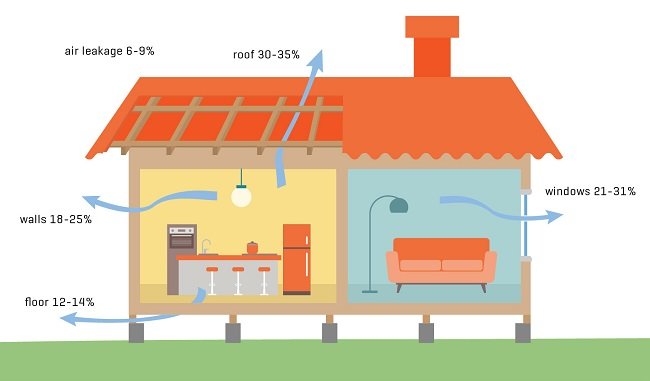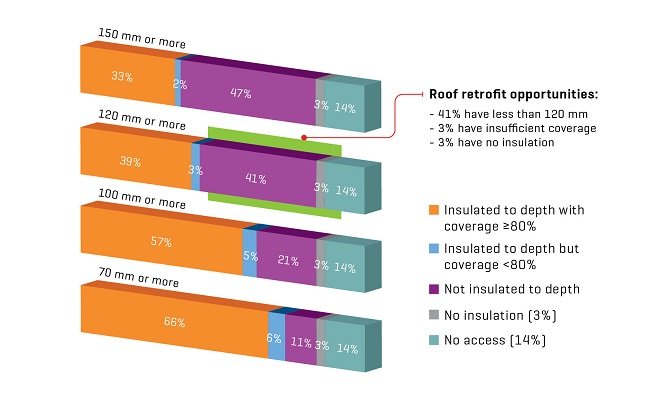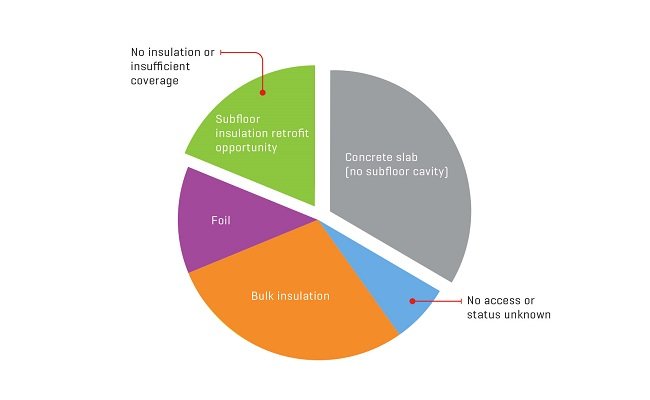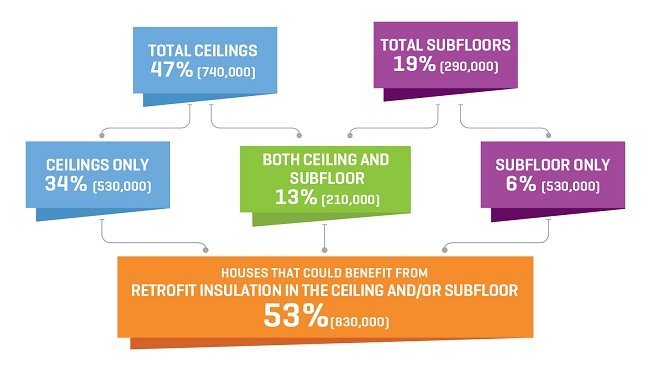Typical areas of heat loss in an uninsulated house

Roof space
Up to 30-35% of heat loss from a dwelling can occur through an uninsulated roof. Installing and topping up insulation in the roof space is therefore one of the most cost-effective solutions for improving thermal performance.
The 2015 House Condition Survey found 39% of homes had at least 120 mm insulation covering at least 80% of the accessible roof space area.
Just under half of the houses surveyed (47%) had less than 80% coverage of insulation in the roof space or insulation that was less than 120 mm thick.

Damaged or poorly fitted insulation can have a substantial impact on its efficacy in reducing heat loss. Around half of houses had at least one defect with insulation in the roof space that could reduce its effectiveness. Defects included gaps in insulation (31%), insulation settling (22%) and insulation that was not fitted properly (16%) or displaced (11%).
Subfloor insulation
The subfloor is another area of the house that can offer substantial benefits in home performance if properly insulated.
In properties that had an accessible subfloor (around two-thirds of all houses surveyed), the survey found that nearly one-fifth had no insulation or insufficient coverage, while 43% had good coverage of bulk insulation.
A further 18% of subfloors had foil insulation (12% of all houses surveyed). Foil performs far less effectively as an insulating layer. Installation or repair of foil in existing homes was also banned in New Zealand in 2016 due to health and safety concerns associated with its electrically conductive properties.
These findings highlight the potential opportunity for improving the thermal performance of a large proportion of the housing stock by fitting or upgrading subfloor insulation.

Overall retrofit opportunity of roofs and subfloors
The survey suggests that around 47% of houses (740,000 dwellings) could benefit from additional insulation in the roof space, and 19% (290,000 dwellings) could benefit from additional insulation of the subfloor. Combined, the results suggest over half the housing stock (53%) could benefit from retrofit insulation in the roof space and/or subfloor.

Insulation in rental properties
There was little difference overall in ceiling insulation levels between owned and rented houses, although a higher proportion of rentals had no insulation in the roof space (6% versus 2%).
New requirements for ceiling and underfloor insulation in rental properties had to be met by July 2019. The 2015 House Condition Survey findings suggest that around 35% of rentals (approximately 190,000 dwellings) may have needed to upgrade insulation in the roof space and/or subfloor to align with the new requirements.
This includes:
- 11% (60,000) rentals needing subfloor insulation only
- 13% (70,000) needing roof insulation only
- 11% (60,000) needing to upgrade both roof and subfloor insulation.
Updated: 4 April 2025